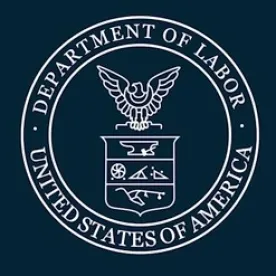The Fair Labor Standards Act (“FLSA”) requires covered employers to pay nonexempt employees at least the federal minimum wage for all hours worked and overtime wages for all hours worked in excess of 40 hours in a workweek. Since 1939, the Department of Labor (“DOL”) has recognized that two or more entities may sometimes “jointly” employ a single employee and share legal responsibility for that employee’s wages for hours worked for either entity. However, the DOL has not formally addressed the conditions under which a “joint employment” relationship exists since 1958.
I. The Current Joint Employer Rule
The DOL’s last official articulation of the standard for identifying a joint employment relationship is codified at 29 C.F.R. § 791.2, a regulation issued more than 60 years ago. Under Section 791.2, the existence of a joint employment relationship depends on whether two entities are acting “entirely independently of each other” and are “completely disassociated” with respect to the “employment of a particular employee.” When an employee either (a) performs work that simultaneously benefits two or more employers or (b) works for two or more employers at different times during the workweek, Section 791.2 states that a joint employment relationship “generally” exists if:
-
The employers have an arrangement to share the employee’s services;
-
One employer is acting directly or indirectly in the interest of the other employer; or
-
The employers directly or indirectly “share control of the employee,” because one employer controls, is controlled by, or is under common control with the other employer.
II. Problems with the Current Joint Employer Rule
Unfortunately, the existing rule’s focus on whether entities are “completely disassociated” rule has not produced a coherent test for distinguishing separate employment from joint employment. Instead, employers have been left with what one federal district court described as a “dizzying world of multi-factor tests,” ranging from the Ninth Circuit’s four-factor test in Bonnette v. California Health & Welfare Agency to the Second Circuit’s 10-factor test in Zheng v. Liberty Apparel Co. Adding to this confusion, a 2017 decision by Fourth Circuit in Salinas v. Commercial Interiors Inc. fashioned an entirely new test for identifying joint employment relationships and criticized the various joint employment tests other federal courts had developed for focusing too much on the “economic realities” between a worker and an alleged employer than on the relationship between the alleged joint employers.
As a result, companies operating in multiple jurisdictions faced the risk of being subject to joint employer liability in one jurisdiction, but not in another, for the same business practices.
III. The DOL’s Proposed Revisions to the Joint Employer Rule
In its review of Section 791.2, the DOL recognized that the myriad joint employment tests federal courts have developed in the six decades since the DOL promulgated Section 791.2 has left employers with significant uncertainty, particularly when they do business in multiple jurisdictions. The DOL also determined that the “not completely disassociated” language in Section 791.2 does not provide adequate guidance for courts in all situations where joint employment relationships may arise. Indeed, the DOL concluded that the “not completely disassociated” standard may incorrectly suggest that relationships between franchisors and franchisees, contractors and subcontractors, and staffing agencies and their clients always create joint employer relationships.
Hoping to explain the statutory basis for joint employer liability under the FLSA, provide guidance to foster uniform standards across the federal courts, and to promote innovation and certainty in business relationships, the DOL’s Notice of Proposed Rulemaking proposes to revise Section 791.2 to better articulate which types of business practices are likely to lead to joint employer liability.
A. A Four-Factor Test for Businesses that “Simultaneously Benefit” from a Single Employee’s Work
As a preliminary matter, the DOL proposes to clarify Section 791.2 to identify two situations that may give rise to a joint employment relationship. In the first situation, one business employs a worker for one set of hours in a workweek and another business employs the same worker for a separate set of hours in the same workweek. In the second situation, one business employs a worker during a workweek, but another business simultaneously benefits from that work.
Under the DOL’s proposed revision to Section 791.2, the “not completely disassociated” standard would remain the standard for determining joint employer liability under the first scenario. With respect to second scenario—which encompasses franchisor-franchisee, contractor-subcontractor, and similar business relationships—the DOL’s revision to Section 791.2 would eliminate the “not completely disassociated” standard and replace it with a “four-factor balancing test” that examines which business:
-
Hires or fires the employee;
-
Supervises and controls the employee’s work schedule or conditions of employment;
-
Determines the employee’s rate of pay and method of payment; and
-
Maintains the employee’s employment records.
B. Clarifications about the Circumstances that Create Joint Employment Liability
No single factor would be dispositive under the DOL’s four-factor test, and the standard for determining whether joint employment exists would remain dependent on the particular facts of each case. However, the DOL’s revision to Section 791.2 would make several important clarifications and changes to the joint employer standard.
1. The Definition of an Employer Would Focus on the “Actual” Exercise of Control over a Particular Worker
Section 791.2 would specifically state that a person must actually exercise, either directly or indirectly, one or more of the four “indicia of control” listed in the four-factor balancing test to be jointly liable as an employer under the FLSA. In a marked departure from the tests developed by most federal courts, the revised Section 791.2 would expressly declare the “ability, power, or reserved contractual right” to take action in relation to the employee irrelevant to determining liability as a joint employer. In the DOL’s view, emphasis on the “actual exercise” of power is most consistent with 29 U.S.C. § 203(d), which defines an “employer” under the FLSA as a person “acting” in relation to an employee.
2. A Worker’s “Economic Dependence” on a Company Would Not be Relevant to the Joint Employer Analysis
Although the revised Section 791.2 would acknowledge the possibility of factors other than those in the DOL’s four-factor test being relevant to identifying a joint employer relationship, the revised regulation would state that other factors should be considered only insofar as they indicate whether a potential joint employer is exercising “significant control over the terms and conditions of the employee’s work” or is directly or indirectly “acting” in the interest of the other employer in relation to the employee at issue. Apparently agreeing with the Fourth Circuit’s criticism of various joint employment tests in Salinas, the revised Section 791.2 would state that an employee’s “economic dependence” on a potential joint employer is irrelevant to deciding if a joint employer relationship exists. To that end, the revised Section 791.2 would provide a non-exhaustive list of “economic dependence” factors that the DOL considers irrelevant to the joint employer analysis.
3. No Particular “Business Model” Would Make Joint Employer Liability More or Less Likely
As revised by the DOL, Section 791.2 would specifically state an entity’s “business model” (e.g., operating as a franchisor) does not make joint employer status “more or less likely” under the FLSA. According to the DOL, this language is intended to obviate “unnecessary confusion and uncertainty” that may arise from Section 791.2’s current silence on this point and to reflect the DOL’s “longstanding” position that it is an entity’s “acting … in relation to” an employee, and not its decision to operate as a franchisor or to utilize subcontractors, that determines liability as a joint employer.
4. Various Business Practices Would be Identified as Not Making Joint Employer Status More or Less Likely
Section 791.2 would identify specific business practices that do not make joint employer status more or less likely under the FLSA. These practices would include providing a sample employee handbook, or other forms, to an employer; allowing an employer to operate a business on its premises (e.g., a “store within a store” arrangement); offering an association health plan or association retirement plan to the employer or participating in such a plan with the employer; jointly participating in an apprenticeship program with the employer; or requiring an employer, as part of a business contract, to institute workplace safety practices, a wage floor, or sexual harassment policies. This clarification is intended to promote “fairness, certainty, and innovation in business relationships.”
5. Application of the Joint Employer Test to Specific Scenarios Would be Provided as Guidance
In a move that is likely to be appreciated by many employers seeking guidance about their potential liability as a joint employer, the DOL’s revision to section 791.2 would add several examples of business relationships that do and do not constitute joint employment relationships under the FLSA. These examples would encompass situations where an employee works for different businesses during the same week and situations where an employees work for one employer simultaneously benefits another business.
IV. Conclusion
The DOL’s revision to the FLSA’s “joint employer” regulations is not yet effective and is still only a “proposed” rule. The proposed rule will remain open for public comment until June 10, 2019.
Notably, the DOL’s rulemaking is part of part of a larger legislative and quasi-legislative trend under the Trump Administration that includes the House of Representatives passing the Save Local Business Act in 2017 (still pending in the Senate) and the National Labor Relations Board’s proposal in September 2018 to update the standard for determining joint employer status under the National Labor Relations Act.
If adopted after the public comment period, the DOL’s revised joint employer regulations should be a welcome development for many companies after years of courts and administrative agencies expressing expansive—and sometimes conflicting—views of when a joint employer relationship exists under the FLSA. That will be particularly true for companies that use franchise agreements, subcontractors, or temporary workers, because the revised regulation would narrow the circumstances under which the DOL believes such employers should be “jointly” liable for the wages of the employees of their franchisees, subcontractors, or staffing agencies.
Nevertheless, businesses which stand to benefit from the FLSA’s revised joint employer rules must be mindful of two things. First, while the DOL’s regulations under the FLSA are generally entitled to significant deference, deference is not automatic—courts must first determine that a regulation presents a “permissible” reading of the FLSA. That is a difficult standard to challenge, but companies should expect significant litigation over the DOL’s revisions if they are adopted. Second, state law may impose joint employer standards that are different from, and sometimes broader than, the test that the DOL is proposing for the FLSA. The California Supreme Court, for example, specifically stated in Martinez v. Combs that California’s definition of “employ” is “[i]n no sense … based on federal law.” Instead, California courts focus on whether a business has the right to control the manner and means on various factors deemed indicative of a common law employment relationship. Additionally, California Labor Code section 2810.3 automatically makes most companies who use workers from staffing agencies jointly liable with the staffing agency for the payment of those workers’ wages.
Therefore, even if the DOL’s proposed revision to the FLSA’s joint employer rules do become effective, businesses are strongly advised to consult an attorney to understand how broad the changes are for a particular location.



 />i
/>i

